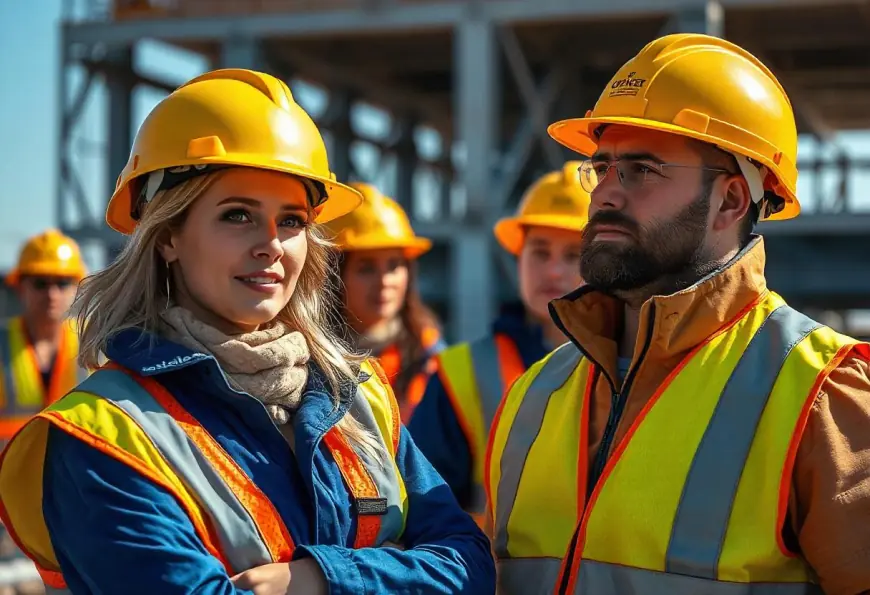How Long Firefighters Ensure Safety on the Job
Firefighters stay safe with training, check-ins, PPE, GPS, radios, and emergency tools—especially when working alone. Safety courses further enhance their readiness.

Being a firefighter is one of the most physically demanding and high-risk jobs in the world. Firefighters face dangers like smoke inhalation, extreme heat, hazardous materials, and the risk of building collapse, all while trying to save lives. When firefighters work alone or in isolated conditions, the risks multiply. Lone firefighters, though rare, are often tasked with certain responsibilities in remote locations, and their safety becomes a top priority.
In this article, we will explore how long firefighters ensure safety on the job. We’ll take a closer look at the risks they face, the safety tools they rely on, and the best practices that keep them safe while performing their life-saving duties. Additionally, enrolling in a Safety Officer Course can provide valuable training for those looking to understand the critical safety protocols that protect firefighters and other emergency responders on the job.
The Unique Challenges of Lone Firefighting
Firefighting is inherently hazardous, but working alone adds extra layers of complexity and danger. While the goal is always to save lives and protect property, lone firefighters operate with less immediate support. This means that they must be highly skilled, well-prepared, and equipped with reliable tools for communication and safety. The stakes are high, and the risks cannot be overlooked.
1. Physical Hazards
Firefighting involves battling intense heat, working in smoke-filled environments, and moving heavy debris. In a solo situation, firefighters are left to face these dangers without backup. If a lone firefighter becomes incapacitated—whether due to exhaustion, injury, or smoke inhalation—help may be delayed or even too late.
Real-Life Example: Jake, a lone firefighter assigned to a rural area, responded to a wildfire near the outskirts of town. When he was caught in a rapidly changing wind pattern, the fire quickly closed in around him. Jake had to rely on his firefighter communication tools and his training to keep himself safe until backup arrived. His quick thinking saved his life and those around him.
2. Emotional and Mental Stress
The psychological strain of being a lone firefighter can be immense. The isolation can lead to anxiety and stress, which can impact decision-making and performance. In a dangerous, high-stakes environment, mental fatigue and stress can have serious consequences.
3. Risk of Delayed Rescue or Assistance
In many cases, lone firefighters may be operating in areas where help is not immediately accessible. This is especially true for those working in remote or rural locations, where teams of firefighters may not be able to arrive for an extended period. In such situations, a quick response is crucial, as delays can mean the difference between life and death.
Essential Tools and Equipment for Lone Firefighters
For lone firefighters, the right communication and safety tools can make all the difference. These tools allow them to stay in constant contact with their team, monitor the situation, and ensure that help can be summoned immediately if needed.
1. Personal Safety Devices
One of the most important tools for a lone firefighter is the Personal Alert Safety System (PASS) device. This portable safety tool helps firefighters by emitting an alarm when the firefighter is motionless for a set period, indicating that they may be in distress. This feature is especially crucial when a firefighter is operating alone and there is no one nearby to notice if they are in trouble.
Advantages of PASS Devices:
-
Alerts rescuers if the firefighter is unconscious or incapacitated
-
Provides real-time alerts in hazardous environments
-
Enhances the overall safety of lone firefighters
2. Firefighter Radio Systems
Two-way radios are an essential communication tool for any firefighter, but for lone firefighters, these radios are even more critical. A reliable radio allows them to communicate with their team or base to report on the situation, request backup, or call for immediate help in an emergency.
Advantages of Two-Way Radios:
-
Ensures constant communication with other team members
-
Allows lone firefighters to call for help or give updates during dangerous situations
-
Can have additional features such as GPS tracking to monitor location in real-time
3. Thermal Imaging Cameras
A thermal imaging camera is another key piece of equipment that helps lone firefighters ensure safety. These cameras allow firefighters to see through smoke, darkness, and heat, helping them to locate victims or navigate through dangerous areas. It’s an indispensable tool for those working alone, as it provides an additional layer of visibility in chaotic conditions.
Benefits of Thermal Imaging Cameras:
-
Detects hotspots and victims through smoke and darkness
-
Enhances the safety of lone firefighters by improving their situational awareness
-
Helps in locating the fire's origin and making strategic decisions
4. GPS Tracking Systems
When firefighters are working alone, their location needs to be monitored closely. GPS tracking systems provide real-time location information to supervisors, allowing them to track the lone firefighter’s movements. This system can be particularly helpful in ensuring the firefighter is operating in a safe area and can quickly be found if an emergency occurs.
Advantages of GPS Tracking:
-
Provides real-time location information to supervisors
-
Ensures quick assistance can be dispatched if needed
-
Reduces the risk of a lone firefighter getting lost or disoriented
The Role of Firefighter Training in Enhancing Safety
Safety training is an essential component of ensuring that lone firefighters are prepared for the hazards they may encounter. Even the best equipment will not replace the need for a solid understanding of fire safety protocols, emergency procedures, and situational awareness.
1. Basic Firefighting Techniques
Firefighters must be thoroughly trained in basic firefighting techniques before they can work independently. These techniques include controlling fires, managing hazardous materials, performing rescues, and dealing with smoke and heat. Training ensures that lone firefighters are ready to take on any situation with the right mindset and skills.
2. Lone Worker Safety Protocols
Lone firefighters must be trained on the specific hazards they face when working alone. These protocols include:
-
Regular check-ins with supervisors to report on their status
-
Steps for activating safety devices or calling for help in emergencies
-
Methods for ensuring proper rest and avoiding exhaustion during long shifts
3. Physical Fitness and Endurance Training
Given the physical demands of firefighting, lone firefighters must maintain excellent physical fitness. Endurance training, strength building, and cardiovascular exercises help firefighters stay alert, strong, and capable of handling the strenuous tasks required during an emergency.
Real-Life Example: Sarah, a lone firefighter working in a dense forest fire, used her endurance training to stay on her feet despite extreme heat and exhaustion. She had been trained to monitor her fatigue and knew when it was time to call for backup. Her proactive approach allowed her to safely manage the situation until reinforcements arrived.
Step-by-Step Guide to Ensuring Lone Firefighter Safety
To help employers and fire departments ensure the safety of their lone firefighters, here’s a step-by-step guide to implementing effective safety practices:
Step 1: Invest in the Right Equipment
Make sure that your lone firefighters are equipped with communication tools like radios, GPS systems, and safety devices such as PASS alarms and thermal cameras. These tools are essential for their safety and will provide the necessary means for quick responses during emergencies.
Step 2: Establish Regular Check-Ins
Develop a check-in protocol that ensures lone firefighters are reporting in at regular intervals. This could be hourly, or after each specific task. Supervisors should be alerted if a check-in is missed and must take immediate action.
Step 3: Provide Ongoing Safety Training
Training should never be a one-time event. Continuous training on fire safety, first aid, and mental health is crucial for lone firefighters. Consider incorporating advanced safety certifications, such as the Safety Officer Course, to further enhance their knowledge.
Step 4: Implement Emergency Protocols
Create clear emergency procedures in case a lone firefighter becomes incapacitated. These protocols should include:
-
How to activate emergency alarms or call for help
-
Specific rescue plans
-
Medical emergency protocols
Step 5: Monitor Well-being and Fatigue
Acknowledge the physical and mental demands on lone firefighters. Encourage them to take breaks and monitor their fatigue levels regularly. This ensures they remain at their best during high-stress situations.
Step 6: Invest in Personal Protective Equipment (PPE)
Ensure that all lone firefighters have the proper PPE, including helmets, fire-resistant clothing, gloves, boots, and respiratory protection. These essential items protect them from hazards like smoke inhalation and burns.
Read More: Safety Officer Course Fee in Pakistan
Conclusion
Lone firefighters are some of the most resilient and brave individuals, but their safety is a priority that requires careful planning, the right tools, and effective training. By equipping them with reliable communication tools, providing continuous safety training, and implementing strict safety protocols, employers can ensure that lone firefighters return home safely after each call.
What's Your Reaction?
 Like
0
Like
0
 Dislike
0
Dislike
0
 Love
0
Love
0
 Funny
0
Funny
0
 Angry
0
Angry
0
 Sad
0
Sad
0
 Wow
0
Wow
0














































